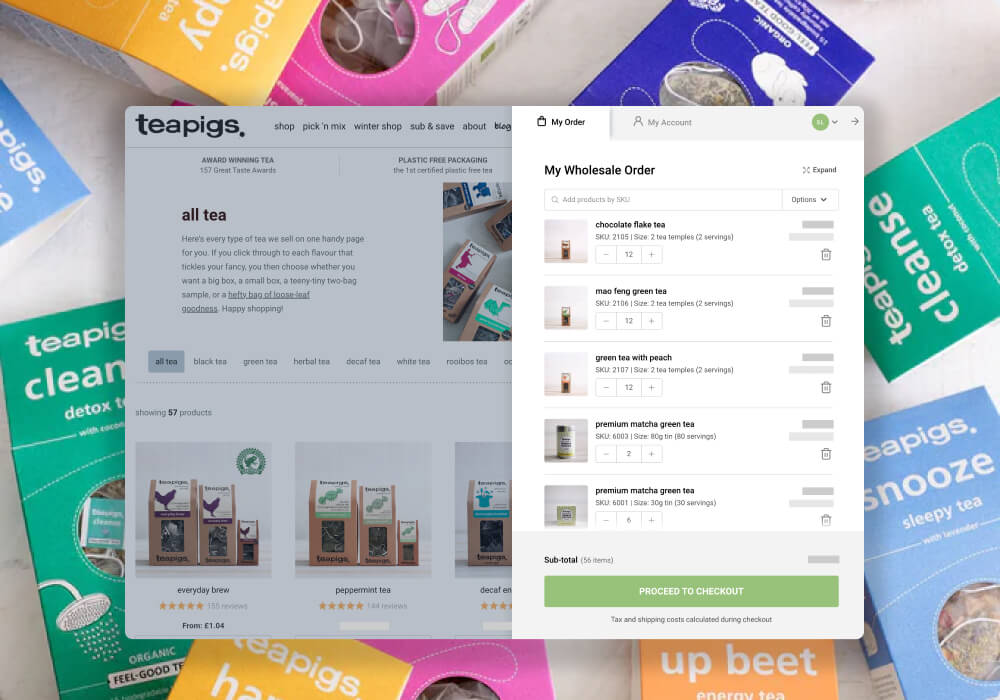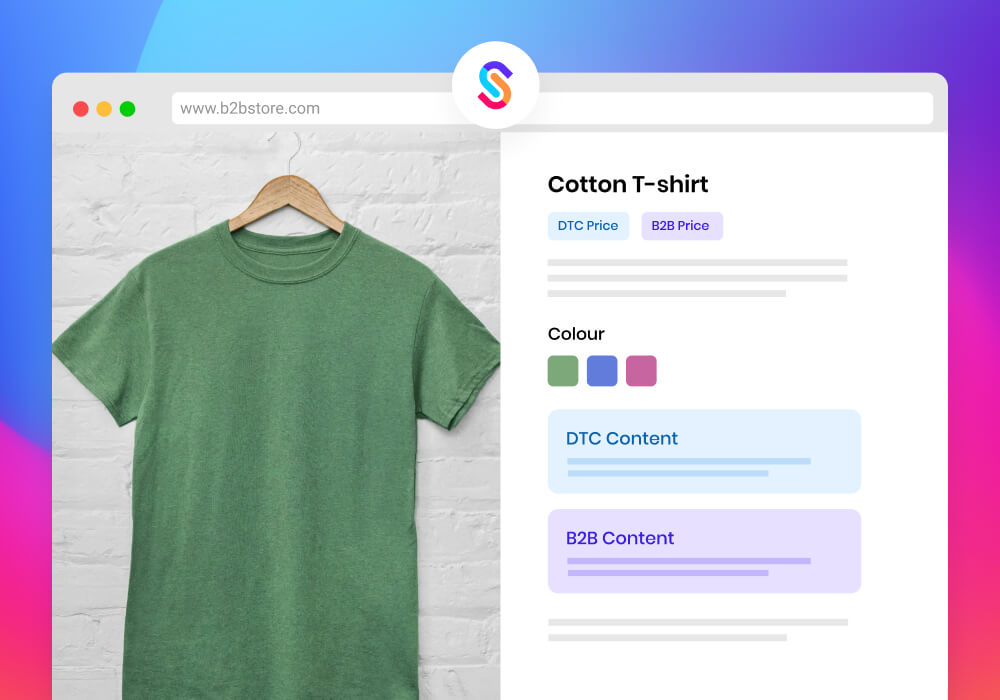In today’s ecommerce landscape, it’s becoming increasingly common for online merchants to have both a retail and wholesale operation. Historically, these channels were often treated as separate entities, with entirely different ecommerce store setups for DTC and B2B.
However, a growing trend is emerging as merchants opt for a “hybrid” approach for these two channels, sometimes referred to as a “blended store”. A hybrid store offers numerous advantages, including a centralised location to manage key ecommerce activities such as catalogue and inventory, content and marketing, and a consistent brand experience on the frontend of the store. In this guide, we’re going to cover five key areas to think about when embarking on this shared DTC and B2B approach. So let's get started!
1. Setting up a DTC and B2B navigation
How to construct the optimal navigation for your B2B customers could itself be a single topic to talk extensively about. On a hybrid store, it’s almost certain that you want your B2B customers to browse via a different navigation to your DTC customers. Perhaps you offer a much simpler catalogue for your B2B customers or you may even offer a different product range entirely. Your eCommerce platform should have simple ways to ‘switch’ how the navigation works based on who the customer is. In Shopify for example, it’s very simply to create navigation menus and, with just a few lines of work, you can vary which navigation menu is shown based on whether or not a B2B customer is signed in.
2. Configuring different shipping rules for DTC and B2B
Managing shipping rules can be complex enough and in a hybrid store, additional layers of complexity are likely to be required to manage different shipping rules based on DTC and B2B. Perhaps your B2B customers aren’t eligible for your ‘free shipping’ threshold or perhaps their shipping costs are based on the total weight of their order. When setting up shipping, ensure your platform allows you to specify rules based on who the customer is. For Shopify, there are a number of great third-party apps such as Intuitive Shipping that allow you to specify shipping rules based on a customer tag and SparkLayer itself has an easy way to enable B2B-only shipping rules
3. Setting up B2B only products and collections
One of the most challenging aspects of a hybrid store is how to manage different product catalogues between DTC and B2B. In the case of B2B, many merchants have products - or collections of products - that are exclusive only to their wholesale customers and it’s important that regular retail customers aren’t able to view or purchase them. This is a topic we’ve covered extensively and we’ve a full guide here on some practical ways to implement this.
4. Displaying DTC-only and B2B-only content blocks
Depending on how far you may be looking to customise the B2B experience on your hybrid store, it’s likely that you’re going to want to hide and show content based on whether it’s a DTC or B2B customer viewing the particular page. One of the easiest ways to achieve this is to create specific content blocks that are restricted based on who the customer is. Your eCommerce platform should have ways to do this and it typically involves adding special “conditional code logic” to your website that either renders a content block or doesn’t. For Shopify, we’ve covered easy ways to do this in our guide here.
5. Configuring DTC and B2B payment methods
Perhaps the most important element of all are payment methods. It’s almost certain that your B2B customers expect different payment methods, e.g. net payment terms, pay on invoice, pay on credit, etc. One of the complications of a hybrid setup is being able to successfully configure these based on a DTC or B2B customer. Your eCommerce platform likely has a way to set this up, however some may require special coding to achieve this. With SparkLayer for exxmple, it’s possible to display B2B-only payment methods on a hybrid store out of the box, and Shopify does also have ways to hide/show payment methods on the checkout using their checkout extensions feature. Additionally, you could also consider using dedicated B2B payment solutions such as Balance and Hokodo to only show for your B2B customers, giving them a more customised B2B payment experience during the checkout process.
Round up
At SparkLayer, we see first hand this convergence between DTC and B2B channels and a large proportion of our customer-base has successfully implemented this hybrid approach.
 teapigs successfully enabled a hybrid DTC and B2B experience on a single store.
teapigs successfully enabled a hybrid DTC and B2B experience on a single store.
What may seem quite a simple concept can actually evolve into a complex process of building our DTC and B2B specific logic and rules. If you’re considering this route too, you’ll need to ensure the platform or solution you use has the capabilities to allow the user experience to be tailored to your requirements. If you'd like to learn more about how SparkLayer can help you deliver a hybrid B2B and DTC store, please feel free to request a demo here!
















